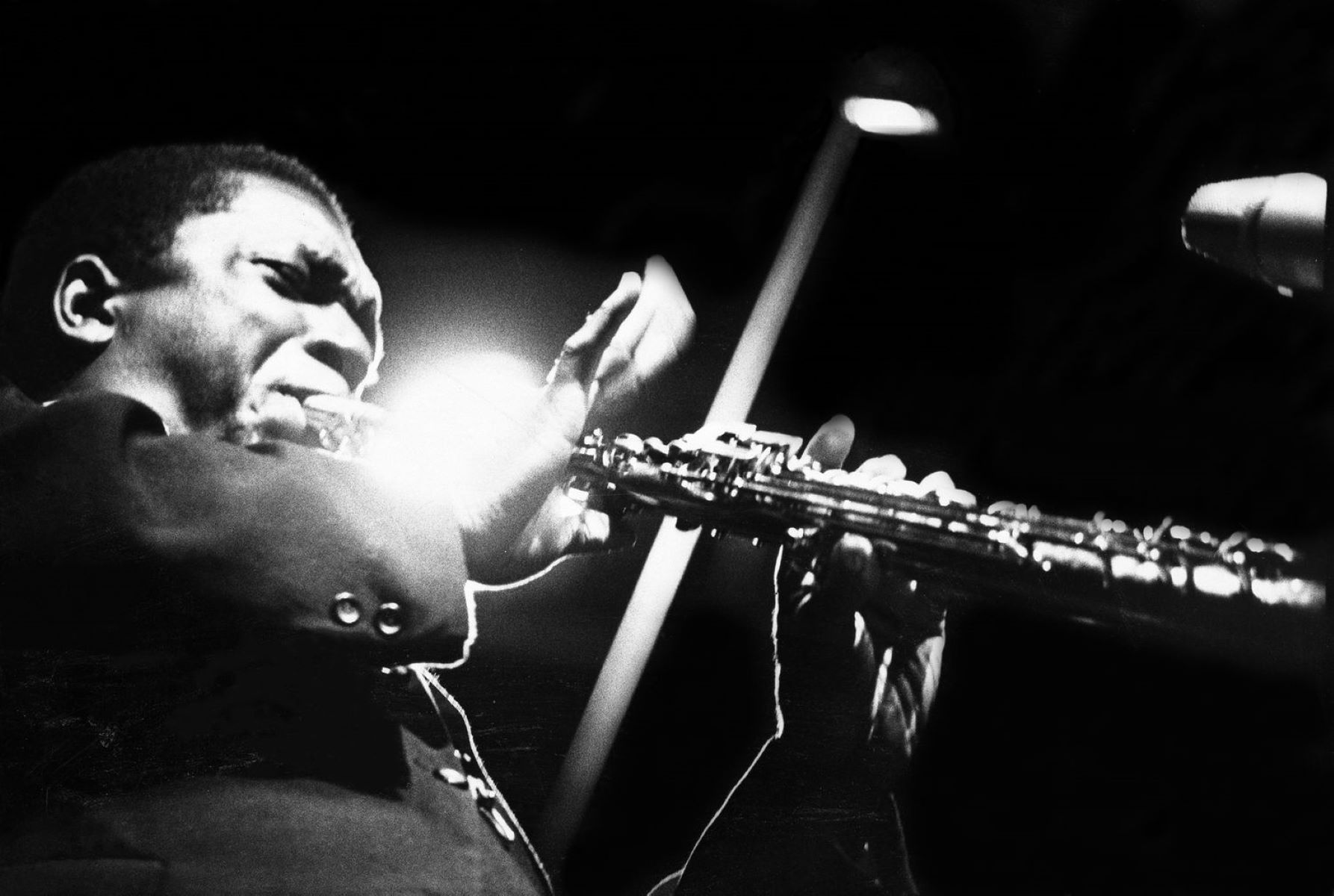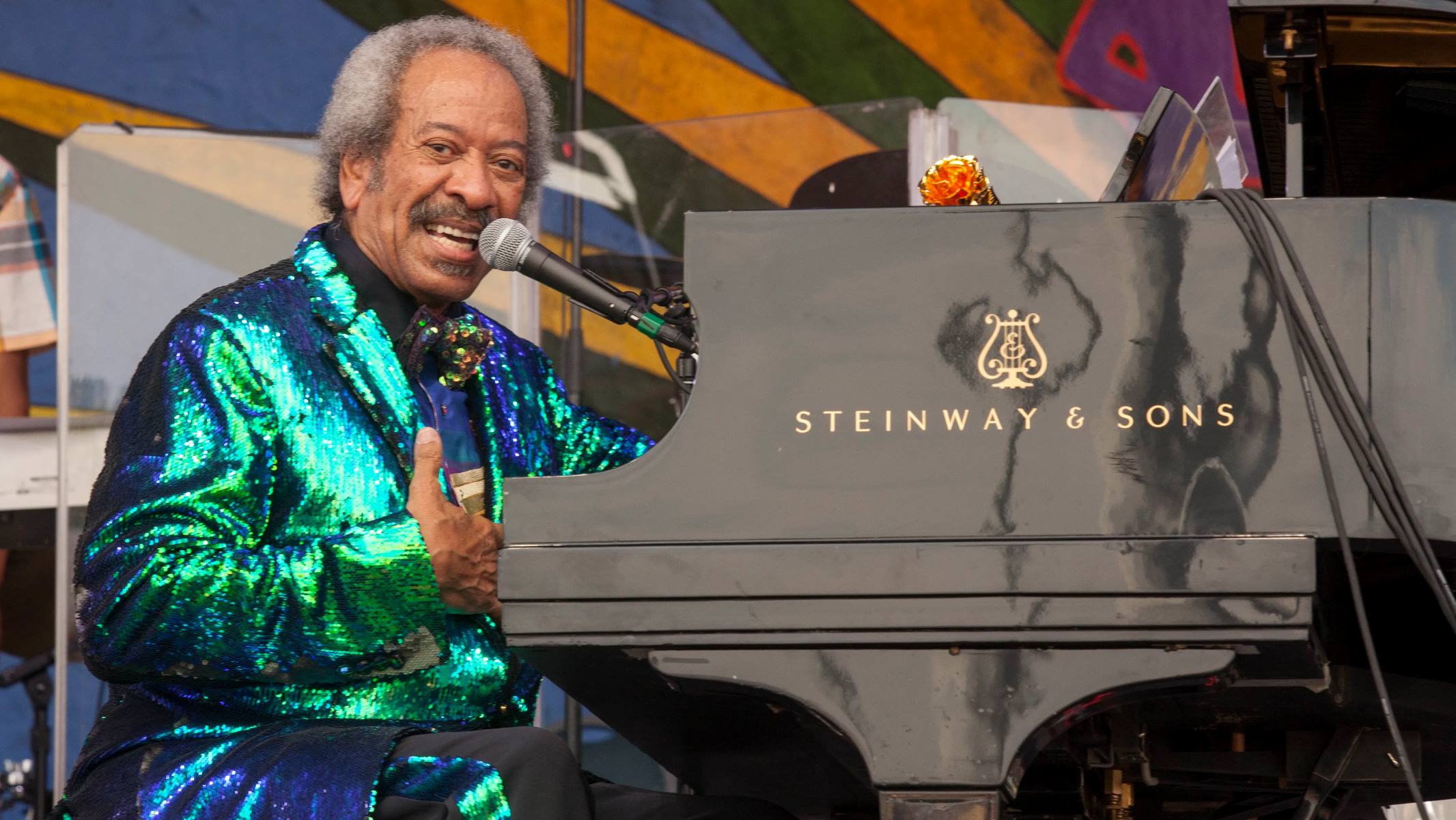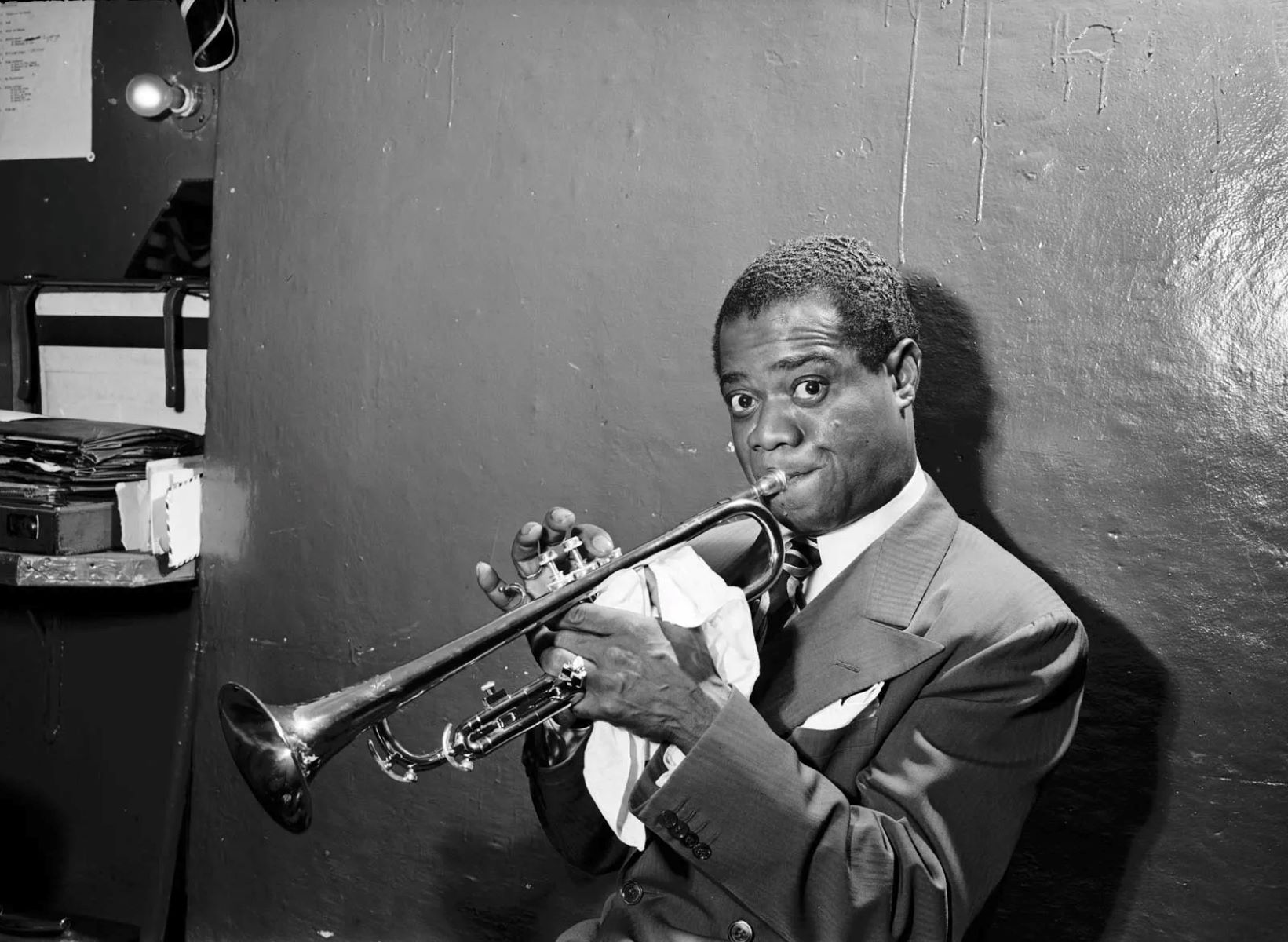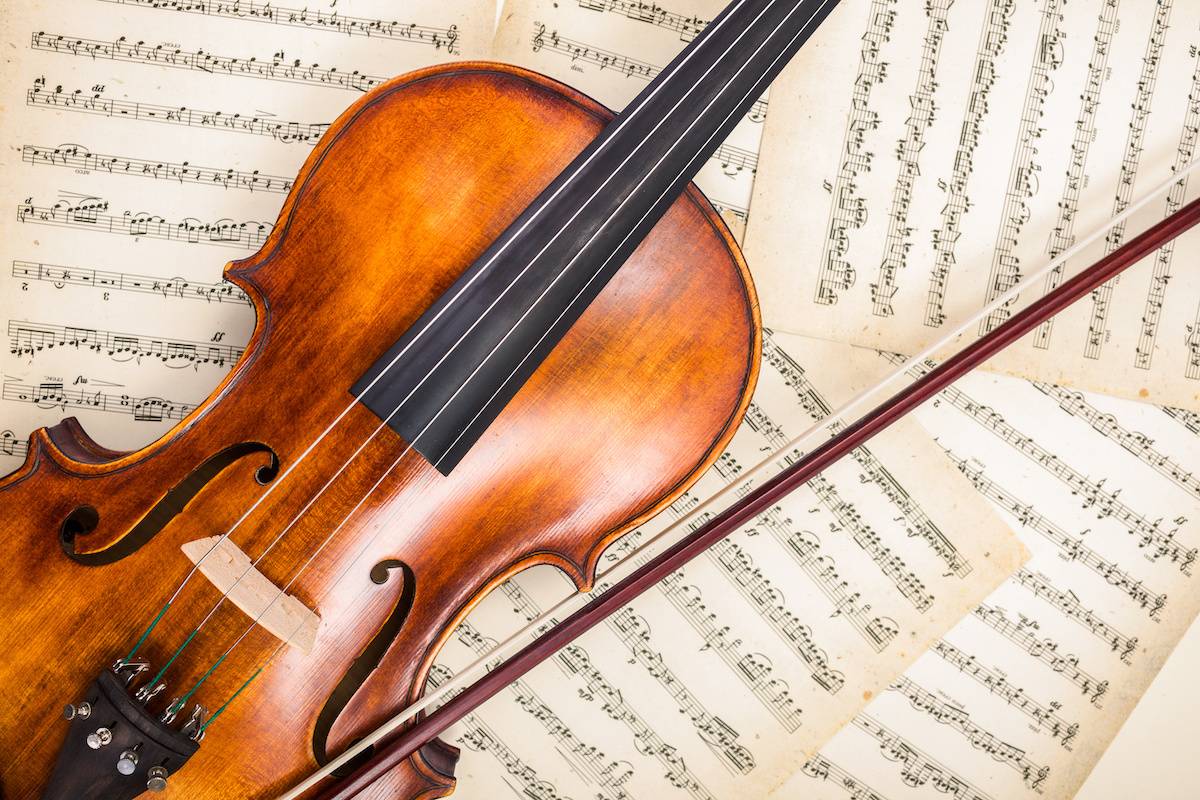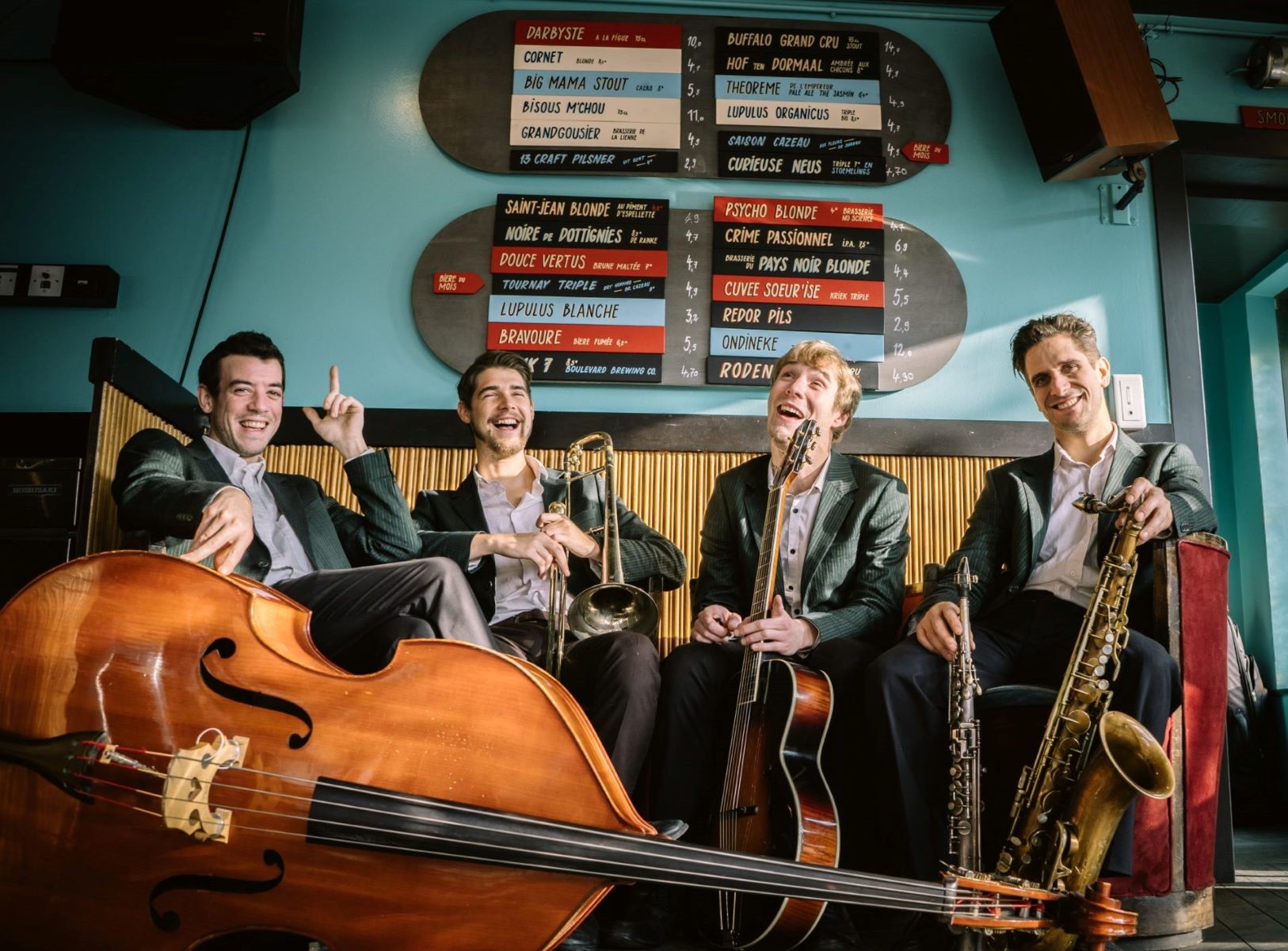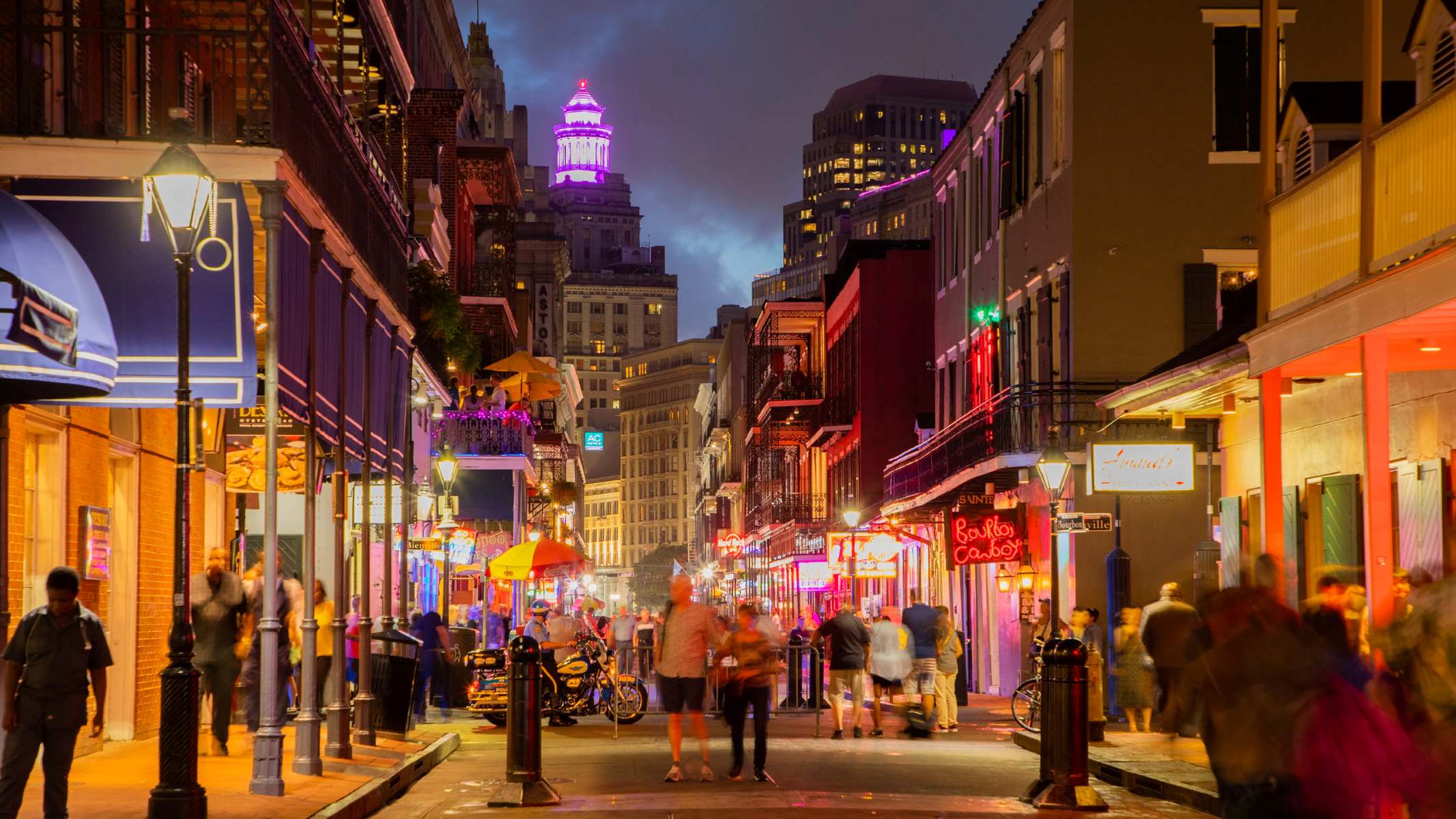

Jazz
Why Did Jazz Start In New Orleans
Modified: January 29, 2024
Discover the origins of jazz and its deep connection to New Orleans. Learn about the factors that led to the birth of this iconic musical genre.
(Many of the links in this article redirect to a specific reviewed product. Your purchase of these products through affiliate links helps to generate commission for AudioLover.com, at no extra cost. Learn more)
Table of Contents
- Introduction
- The Birthplace of Jazz: New Orleans
- Cultural Melting Pot: A Brief History of New Orleans
- The Influences of African and Caribbean Music
- The Role of Storyville in Jazz’s Development
- The Influence of Creole Musicians
- The Emergence of Jazz Bands
- The Great Migration and Jazz’s Spread
- Jazz’s Influence on American Music
- Conclusion
Introduction
Jazz, a truly unique and innovative genre of music, has captivated audiences around the world for decades. Its distinct rhythmic patterns, improvisation, and melodic complexities have made it a cultural phenomenon. But have you ever wondered where and how jazz began?
The birthplace of jazz can be traced back to the vibrant city of New Orleans, a melting pot of cultures and traditions. With its rich history and diverse musical influences, New Orleans became the fertile ground where jazz took root and flourished.
In this article, we will explore the fascinating origins of jazz in New Orleans, uncovering the cultural tapestry that gave rise to this iconic musical genre. From the African and Caribbean rhythms that permeated the city to the influence of Creole musicians and the pivotal role of Storyville, we will delve into the factors that shaped the early development of jazz.
Additionally, we will examine how jazz eventually spread beyond New Orleans thanks to the Great Migration, leaving an indelible mark on American music as a whole.
Whether you’re a jazz enthusiast or someone curious about the history of this genre, join us as we take a captivating journey into the heart and soul of jazz – the city of New Orleans.
The Birthplace of Jazz: New Orleans
New Orleans, affectionately known as the “Big Easy,” is recognized globally as the birthplace of jazz. The city’s vibrant and diverse cultural landscape laid the foundation for the creation of this groundbreaking musical genre.
One of the key reasons why New Orleans became the birthplace of jazz is its history as a major port city. Situated at the mouth of the Mississippi River, it served as a melting pot of different cultures, attracting people from various backgrounds and bringing together a diverse range of musical traditions.
The African influences that permeated New Orleans were instrumental in the development of jazz. The African diaspora brought along rhythms, chants, and musical traditions that formed the basis of early jazz. The syncopated rhythms, polyrhythms, and call-and-response structures prevalent in African music found their way into the emerging jazz sound.
Another significant influence on jazz in New Orleans came from the Caribbean. The city’s proximity to the Caribbean islands resulted in a vibrant exchange of musical ideas and styles. The syncopated rhythms of Cuban and Puerto Rican music, the dance forms of the Haitian Vodou ceremonies, and the intricate melodies of French-Creole songs all seeped into the developing jazz scene.
One pivotal element that contributed to the birth of jazz in New Orleans was the establishment of Storyville, the city’s infamous red-light district, in 1897. The district provided musicians with a platform to showcase their skills and experiment with different musical styles. Jazz began to flourish in the clubs and brothels of Storyville, where musicians would push the boundaries of traditional music, improvising and creating new sounds.
Creole musicians also played a crucial role in the early development of jazz. The term “Creole” referred to people of mixed African, European, and Native American heritage. These musicians were classically trained and well-versed in European musical traditions. They brought their technical expertise and blended it with the African and Caribbean influences, creating a unique fusion that would shape jazz’s distinct sound.
As the city continued to evolve, jazz bands began to emerge, taking the music from the intimate settings of brothels and bars to larger venues like dance halls and theaters. These bands would perform a mix of popular tunes, blues, and improvisations, captivating audiences with their energy and virtuosity.
The birth of jazz in New Orleans was a result of the city’s cultural diversity, vibrant music scene, and a deep appreciation for innovation and creativity. It was here that all the musical elements converged, giving birth to a genre that would go on to revolutionize the world of music.
Cultural Melting Pot: A Brief History of New Orleans
New Orleans, a city steeped in history and mystique, has long been known for its vibrant cultural scene. Its unique mix of European, African, and Caribbean influences has contributed to the city’s reputation as a cultural melting pot. Understanding the history of New Orleans is crucial to comprehending the roots of jazz and the diverse musical traditions that influenced its birth.
The story of New Orleans begins with its colonization by the French in 1718. The French brought with them their own cultural traditions and music, such as the waltz and quadrille, which blended with the existing Native American and African musical styles. Soon after, in 1763, the city was transferred to Spanish control, further infusing new influences into the local culture.
One pivotal event in New Orleans’ history was the Louisiana Purchase in 1803. The United States acquired the territory from France, bringing a wave of American influence to the city. This acquisition laid the foundation for the diverse cultural landscape that would shape New Orleans and ultimately give birth to jazz.
One of the defining factors in New Orleans’ musical heritage is its strong African presence. New Orleans served as a major port for the slave trade, resulting in a significant African diaspora. African music, with its complex rhythms and vibrant energy, found a new home in the city and merged with the existing European musical traditions.
Furthermore, New Orleans’ proximity to the Caribbean islands, such as Cuba and Haiti, facilitated a flow of cultural exchange. The Caribbean immigrants who settled in New Orleans brought along their own musical styles and rhythms, which blended with the African and European elements that were already present.
The cultural landscape of New Orleans was further shaped by the establishment of the notorious red-light district known as Storyville in 1897. Although it was only in operation for 20 years, Storyville played a significant role in the development of jazz. The district provided a platform for musicians to experiment and create new sounds, pushing the boundaries of traditional musical norms.
With its diverse mix of cultures, New Orleans became a hotbed of musical innovation. Musicians from different backgrounds converged in the city, sharing and exchanging musical ideas. The result was a unique musical melting pot that laid the foundation for the birth of jazz.
Understanding the cultural history of New Orleans is crucial to appreciating the multifaceted roots of jazz. From the European influences brought by the French and Spanish colonists to the African and Caribbean rhythms that permeated the city, the diverse cultural tapestry of New Orleans shaped the vibrant musical traditions that would eventually give birth to one of the most influential genres in history – jazz.
The Influences of African and Caribbean Music
Jazz, a genre deeply rooted in African and African-American traditions, owes much of its unique sound to the rich musical heritage of both Africa and the Caribbean. The rhythmic complexities, improvisation, and call-and-response structures found in African and Caribbean music were integral in shaping the early development of jazz.
The African influence on jazz can be traced back to the African diaspora during the era of slavery. The transatlantic slave trade brought millions of Africans to the shores of the Americas, including New Orleans, where they were exposed to the musical traditions of their enslavers. However, despite the harsh conditions of slavery, African musical traditions persevered and found their place in the emerging jazz sound.
African music is characterized by its powerful rhythmic patterns, syncopation, and polyrhythms. These rhythmic elements are at the heart of jazz, creating a lively and infectious groove that is instantly recognizable. African musicians often played various percussion instruments, such as drums, rattles, and xylophones, which provided the foundation for the rhythmic complexity that would later become a hallmark of jazz.
Similarly, the influence of Caribbean music can be felt in the development of jazz. New Orleans, being a port city, was a hub for trade and cultural exchanges, particularly with the Caribbean islands. The rhythmic and melodic influences of Cuban, Haitian, and Puerto Rican music found their way into the evolving jazz scene.
Cuban music, with its infectious rhythms like the clave, influenced the development of syncopated rhythms in early jazz. Haitian Vodou ceremonies, with their lively drumming and dance forms, brought elements of African and Caribbean spirituality into the musical landscape of New Orleans.
The Creole musicians of New Orleans played a significant role in bridging the gap between African, Caribbean, and European musical traditions. Creole musicians, who were of mixed African, European, and Native American ancestry, brought their knowledge of classical European music theory and technique into the mix. They incorporated the African and Caribbean rhythms into their compositions, resulting in a distinct fusion that shaped the emerging jazz sound.
Together, the influences of African and Caribbean music formed the foundation upon which jazz was built. The syncopated rhythms, call-and-response structures, and improvisational nature of these musical traditions laid the groundwork for the vibrant and dynamic genre we know today.
As jazz continued to evolve and spread beyond New Orleans, it carried with it the rich cultural influences of Africa and the Caribbean, forever ingrained in its DNA. The profound impact of these musical traditions on jazz serves as a testament to the power of cultural exchange and the ability of music to transcend boundaries.
The Role of Storyville in Jazz’s Development
When discussing the birth and early development of jazz, it is impossible to overlook the significant role that Storyville, the red-light district of New Orleans, played in shaping the genre. From 1897 to 1917, Storyville provided a unique environment for musicians to showcase their talents, experiment with new sounds, and lay the foundations for what would become known as jazz.
Storyville was established as a way to regulate prostitution in the city. It confined the city’s brothels, saloons, and gambling houses to a specific district, creating an environment where people could openly engage in activities that were otherwise deemed illegal or immoral.
However, Storyville was much more than just a haven for vices. It was a vibrant and bustling neighborhood that attracted a diverse range of people, including musicians. In the saloons, clubs, and dance halls of Storyville, musicians found steady employment performing for patrons eager to be entertained.
The presence of a dedicated music scene in Storyville allowed musicians to form bands, hone their skills, and collaborate with one another. Jazz bands, consisting of brass instruments, woodwinds, and rhythm sections, began to emerge, creating a unique sound and energy that captivated audiences.
One of the crucial elements that set Storyville apart was its tolerance for musical experimentation. Musicians were encouraged to push traditional boundaries, exploring and improvising with different musical styles and techniques. This environment of artistic freedom and expression laid the foundation for the improvisational nature of jazz.
Furthermore, the multicultural nature of Storyville played a significant role in shaping jazz’s development. Musicians from diverse backgrounds, such as African Americans, Creoles, and European immigrants, congregated in this district. This unique melting pot of cultures resulted in a fusion of musical styles, where African rhythms, Creole influences, and European musical techniques blended together.
Notable musicians who began their careers in Storyville include the likes of Buddy Bolden, Ferdinand “Jelly Roll” Morton, and Sidney Bechet. These musicians, along with countless others, experimented with harmonies, rhythms, and improvisation in the venues of Storyville, laying the groundwork for the evolution of jazz.
While Storyville itself was shut down in 1917, due to new regulations and changing societal attitudes, its influence on jazz was far-reaching. The musicians who had honed their craft in Storyville took their skills and experiences outside of the district, forming the foundation of jazz scenes in cities like Chicago and New York.
The legacy of Storyville extends beyond its physical existence. Its impact on the development of jazz as an innovative and boundary-pushing genre remains imprinted in the DNA of the music itself. Storyville’s nurturing environment for musicians allowed for the creation of an entirely new form of expression that would go on to change the course of music history.
The Influence of Creole Musicians
The vibrant city of New Orleans, known for its eclectic mix of cultures and rich musical heritage, owes much of its musical evolution to the contributions of Creole musicians. The term “Creole” refers to individuals of mixed African, European, and Native American heritage. These talented musicians played a pivotal role in the early development of jazz and left an indelible mark on the genre.
Creole musicians brought a unique perspective to the music scene in New Orleans. Many of them were classically trained, having studied European music theory and technique. This background allowed them to incorporate elements of European musical traditions into their performances, while also infusing the vibrant rhythms and melodies of African and Caribbean music.
One of the key contributions of Creole musicians was their proficiency in playing multiple instruments. These versatile musicians could move effortlessly between different instruments such as the piano, violin, clarinet, and brass instruments. Their technical expertise allowed for intricate and complex musical arrangements, adding a level of sophistication to the early jazz sound.
Moreover, Creole musicians were well-versed in improvisation, a crucial element in the development of jazz. They used their knowledge of various musical styles and their understanding of harmonies and melodies to create innovative and spontaneous musical expressions. Their improvisational skills helped shape the foundation of jazz and set it apart from other musical genres.
The unique cultural background of Creole musicians also influenced the fusion of different musical traditions in early jazz. Their heritage allowed them to bridge the gap between African, Caribbean, and European music, resulting in a rich blend of styles and influences. The syncopated rhythms of African and Caribbean music found common ground with the structured harmonies and melodies of European music, creating a distinct musical hybrid.
Prominent Creole musicians such as Ferdinand “Jelly Roll” Morton, Sidney Bechet, and Louis Armstrong made significant contributions to the development of jazz. Jelly Roll Morton, often regarded as one of the earliest jazz composers, incorporated ragtime, blues, and Creole influences into his compositions, pioneering new approaches to jazz arrangement and structure.
Sidney Bechet, known for his mastery of the clarinet and soprano saxophone, brought a distinct emotional quality to his performances, infusing elements of the blues and Caribbean music into his playing. His virtuosity and innovative approach influenced numerous musicians who came after him.
Louis Armstrong, arguably one of the most influential jazz musicians of all time, was of Creole descent. His groundbreaking trumpet playing and unique vocal style revolutionized the genre. Armstrong’s ability to blend elements of blues, swing, and ragtime with his improvisational skills set a new standard for jazz musicians, elevating the genre to new heights.
The influence of Creole musicians cannot be overstated when discussing the development of jazz. Their technical proficiency, improvisational skills, and cultural background played an integral role in shaping the genre’s early sound. Their contributions fueled the blending of different musical traditions and allowed for the creation of a unique and groundbreaking form of expression that would continue to evolve and captivate audiences around the world.
The Emergence of Jazz Bands
As jazz evolved in the vibrant musical landscape of New Orleans, it began to take the form of organized groups known as jazz bands. These bands played a significant role in the development and popularization of jazz, showcasing the unique talents of the musicians and creating a distinct sound that would come to define the genre.
The emergence of jazz bands can be attributed to the growing demand for live music entertainment in New Orleans during the late 19th and early 20th centuries. As the city expanded and social gatherings became more commonplace, there was a need for instrumental ensembles that could provide lively and energetic music for dancing and entertainment.
Jazz bands typically consisted of a combination of brass instruments, woodwinds, and a rhythm section. The brass section, which commonly included trumpets, trombones, and occasionally cornets, provided the bright and bold melodies that were characteristic of jazz. The woodwinds, such as clarinets and saxophones, added a melodic and improvisational element to the ensemble.
In addition to the brass and woodwind sections, jazz bands featured a rhythm section that provided the beat and pulse of the music. The rhythm section typically included instruments like the piano, banjo, guitar, bass, and drums. It was the interplay between these instruments that laid the foundation for the swinging and energetic rhythms that became synonymous with jazz.
One of the earliest and most influential jazz bands was the group led by cornetist Buddy Bolden, often considered the first jazz musician. Bolden’s band, which started performing in the late 1890s, was known for its lively performances and improvisation, setting the stage for the future of jazz.
Other influential jazz bands soon followed, such as those led by King Oliver, Kid Ory, and the Original Dixieland Jass Band, who gained popularity outside of New Orleans and helped spread the popularity of jazz to other parts of the United States and abroad.
These bands performed a mix of popular tunes, blues, and improvisations. They entertained audiences with their virtuosic solos, syncopated rhythms, and a lively energy that was infectious and irresistible. The collective improvisation and interplay between band members were integral to the jazz band’s sound, setting them apart from traditional orchestras and other musical ensembles of the time.
An important distinction of jazz bands was the freedom given to individual musicians to showcase their skills through solos and improvisation. These impromptu solo performances allowed musicians to express their creativity and musicality, elevating the dynamic and unpredictable nature of jazz.
The emergence of jazz bands paralleled the rise of jazz as a popular genre. These bands became a staple of social gatherings, dance halls, and jazz clubs, captivating audiences with their infectious rhythms and innovative musical expressions.
The concept of jazz bands continues to be a fundamental element in jazz today. From traditional Dixieland bands to modern big bands, the ensemble format and the collective improvisation that define jazz bands remain central to the genre’s identity.
The emergence of jazz bands marked an important milestone in the development of jazz music. It allowed for the exploration and expansion of the genre, serving as a platform for musicians to showcase their talents and collectively create the distinctive sound that would shape the future of jazz.
The Great Migration and Jazz’s Spread
The Great Migration, a mass movement of African Americans from the rural South to cities in the North and West of the United States during the early 20th century, played a crucial role in the spread and popularity of jazz. As African Americans sought better economic opportunities and escaped racial oppression, they brought their rich musical traditions, including jazz, to new regions, forever changing the cultural landscape of American music.
The Great Migration began around the 1910s and continued into the 1970s. The harsh realities of Jim Crow laws, sharecropping, and limited economic prospects prompted African Americans to seek a better life in cities like Chicago, New York, and Detroit. This mass movement of people would have a profound impact on the cultural fabric of these urban centers, including their music scenes.
As African Americans settled in new cities, they brought with them the sounds of jazz, which had its roots in the vibrant musical traditions of New Orleans. Jazz, with its infectious rhythms, emotive melodies, and improvisational nature, resonated with the experiences and aspirations of African Americans during this time of social change and cultural renaissance.
In cities like Chicago, the influx of African American migrants created vibrant neighborhoods and communities that fostered the growth and development of jazz. Clubs, dance halls, and theaters became the venues where jazz musicians performed, and these vibrant scenes drew in diverse audiences from all walks of life. The popularity of jazz quickly spread throughout the city and attracted attention from record companies and music industry executives.
In New York City, the Harlem Renaissance became a cultural hotspot, attracting African American artists, writers, and musicians. Jazz filled the clubs, speakeasies, and penthouse parties of Harlem, becoming the soundtrack of the era. Jazz musicians like Duke Ellington, Louis Armstrong, and Count Basie rose to prominence during this time, captivating audiences nation-wide through radio broadcasts and recordings.
The spread of jazz was not limited to Chicago and New York. Other cities impacted by the Great Migration, such as Detroit, Philadelphia, and Los Angeles, also experienced a surge of jazz activity. These new hubs brought together musicians from different regions, allowing for further cross-pollination of musical ideas and styles. Jazz evolved, adapted, and incorporated local influences, creating unique subgenres and regional variations.
The migration of African American musicians and the popularity of jazz opened doors for interracial collaborations and cultural exchanges. Jazz became a unifying force, transcending racial and social barriers. It inspired and influenced not only other musicians but also artists, writers, and intellectuals, who recognized its significance as both a musical expression and a symbol of cultural resistance.
Jazz’s spread during the Great Migration transformed the genre from a regional style rooted in New Orleans into a national phenomenon. It became a symbol of identity and freedom for African Americans, serving as the soundtrack of a transformative period in American history.
The impact of the Great Migration on jazz’s spread cannot be overstated. The movement of African Americans from the South to urban cities brought together diverse musical influences, creating a melting pot of styles and sounds. Jazz’s popularity reached new heights, and its influence on American music and culture continued to grow, leaving an indelible legacy that resonates to this day.
Jazz’s Influence on American Music
Jazz, with its rich musical heritage and innovative spirit, has had a profound and lasting impact on American music. From its early development in New Orleans to its spread across the United States, jazz has influenced and shaped a wide range of musical genres, paving the way for new sounds, techniques, and styles.
One of the key ways in which jazz has influenced American music is through its emphasis on improvisation. Jazz musicians were known for their ability to spontaneously create melodies, harmonies, and rhythms, responding to the energy and dynamics of the moment. This emphasis on improvisation not only set jazz apart from other genres but also served as a catalyst for experimentation and creativity in various musical styles.
The influence of jazz on popular music cannot be overstated. In the early 20th century, jazz melodies and rhythms began to find their way into popular songs. The syncopated rhythms, swinging melodies, and vibrant energy of jazz infused popular music with a sense of excitement and spontaneity. This fusion of jazz with popular music genres like Tin Pan Alley, ragtime, and blues gave birth to a new form of music that captured the spirit of the times.
The Big Band era of the 1930s and 1940s further solidified jazz’s influence on American music. Big bands, characterized by their large ensembles and elaborate arrangements, incorporated elements of jazz improvisation into their performances. This era saw the rise of iconic bandleaders like Duke Ellington, Count Basie, and Benny Goodman, whose innovative compositions and arrangements shaped the course of popular music.
Jazz’s influence on American music extended beyond the realm of popular songs. It influenced the development of other genres such as swing, bebop, cool jazz, and fusion. The intricate harmonies, complex chord progressions, and sophisticated arrangements found in these genres can be traced back to the experimentation and innovations of jazz musicians.
Rock and roll, a genre synonymous with rebellion and youth culture, also bears the mark of jazz’s influence. The energetic rhythms, guitar solos, and improvisational nature of rock music can be traced back to the roots of jazz. Musicians like Chuck Berry, Jimi Hendrix, and Frank Zappa drew inspiration from the improvisatory spirit and rhythmic drive of jazz in their rock compositions and performances.
Even genres such as hip-hop, electronic music, and contemporary R&B have been shaped by jazz. Jazz samples have been used in countless hip-hop tracks, providing the foundation for the genre’s beats and grooves. Electronic musicians have drawn on the improvisational nature of jazz, incorporating live instrumentation and experimenting with new sounds and textures. Artists in contemporary R&B continue to draw from the soul and emotive qualities of jazz, infusing their music with sophistication and depth.
Jazz’s influence on American music is not limited to specific genres; it transcends boundaries and continues to inspire artists of all backgrounds and styles. Its spirit of innovation, improvisation, and creative expression has left an indelible mark on the musical landscape of the United States. Jazz has become a quintessential part of the American musical identity, reflecting the diversity and creative freedom that defines American culture.
Conclusion
Jazz, originating in the culturally diverse city of New Orleans, has left an indelible mark on the history of music. The blend of African and Caribbean rhythms, the influence of Creole musicians, and the experimentation in Storyville all contributed to the birth and early development of jazz. As jazz bands emerged, the genre gained popularity and spread throughout the country, thanks in part to the Great Migration and the movement of African Americans to northern cities.
The influence of jazz extends far beyond its own genre. Its rhythmic complexities, improvisational nature, and emphasis on individual expression have impacted countless musical styles. Jazz’s influence can be heard in popular music, from the swing era to rock and roll, and continues to shape contemporary genres like hip-hop, electronic, and R&B.
What sets jazz apart is its ability to bridge gaps and foster cultural exchange. It brought together diverse musical traditions and provided a platform for musicians to express themselves freely. Jazz has transcended geographical, racial, and social boundaries, becoming a symbol of creativity, resilience, and the power of musical innovation.
In conclusion, the birthplace of jazz in New Orleans, the influences of African and Caribbean music, the role of Storyville, the contributions of Creole musicians, the emergence of jazz bands, and the impact of the Great Migration all played integral roles in jazz’s development and spread. Jazz’s influence on American music is immeasurable, shaping the soundscape of popular music and serving as a constant source of inspiration for musicians across genres and generations.
As we continue to enjoy and appreciate the timeless beauty of jazz, let us remember its roots and the cultural tapestry from which it emerged. Jazz’s rich history and its ability to captivate audiences with its infectious rhythms and soulful melodies make it not just a genre of music, but a cultural phenomenon that will forever hold a special place in the hearts of music lovers around the world.

